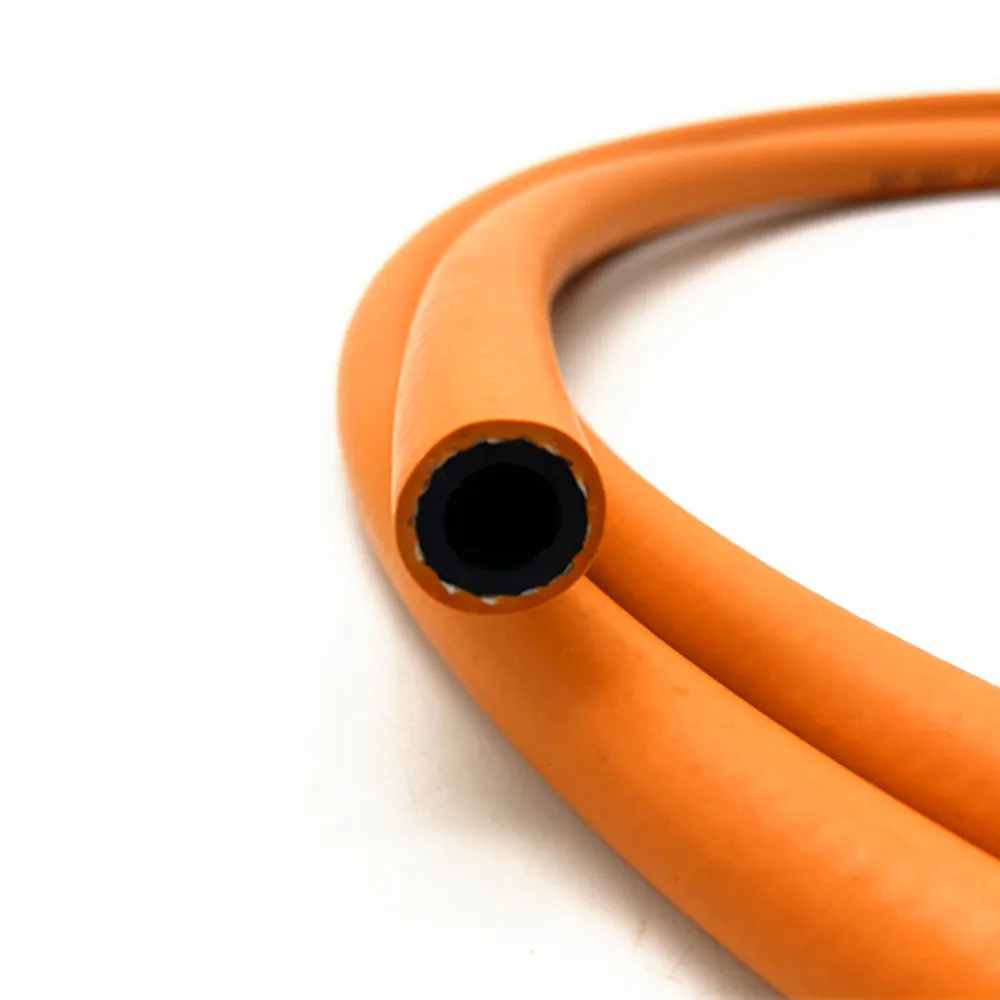pvc air hose vs rubber
PVC Air Hose vs. Rubber Air Hose Which Is the Better Choice?
When it comes to air hoses, two of the most popular materials used in their construction are polyvinyl chloride (PVC) and rubber. Both types have their own unique advantages and disadvantages that can influence your decision based on the intended application. This article will explore the key differences between PVC air hoses and rubber air hoses, helping you make an informed choice that best suits your needs.
Understanding the Materials
PVC Air Hoses PVC is a type of plastic that is lightweight, flexible, and resistant to various chemicals. PVC air hoses are often less expensive than their rubber counterparts, making them a popular choice for general-purpose applications. They are typically available in various colors and lengths, which can be attractive for specific uses.
Rubber Air Hoses Rubber, on the other hand, is a naturally flexible and durable material. Rubber air hoses are known for their superior heat, abrasion, and weather resistance. These hoses are often preferred for heavy-duty applications where durability and performance are crucial.
Flexibility and Handling
One of the main advantages of PVC air hoses is their lightweight and flexible nature. They are easy to handle, transport, and store, making them an excellent choice for DIY projects or light industrial applications. However, when subjected to extreme temperatures, PVC hoses can become stiff and difficult to maneuver.
In contrast, rubber hoses maintain their flexibility even in cold conditions. This resilience makes them ideal for outdoor use in varying weather conditions. However, they can be heavier and bulkier compared to PVC hoses, which may not be ideal for all users.
Durability and Longevity
Durability is another critical factor when choosing between PVC and rubber air hoses. PVC hoses are generally less expensive, but they can wear out more quickly, especially under high-pressure applications or extreme conditions. They are prone to cracking or splitting over time, which can lead to air leaks.
pvc air hose vs rubber

Rubber air hoses are renowned for their durability and can withstand high levels of pressure and wear. They are less likely to become brittle over time and can handle rough handling better than PVC hoses. While they may have a higher upfront cost, their longevity can make them a more cost-effective option in the long run.
Temperature Resistance
Temperature resistance is a vital consideration based on where and how you plan to use your air hose. PVC air hoses typically function well at moderate temperatures but may struggle in extreme heat or cold. High temperatures can cause the PVC to soften and weaken, while cold conditions can lead to brittleness.
Rubber air hoses are well-suited for a broader range of temperatures, making them more versatile for outdoor and industrial applications. They remain flexible and resilient in a variety of weather conditions, making them a more reliable option for professional environments.
Applications and Usage
The choice between PVC and rubber air hoses often comes down to the intended application. For light-duty tasks such as inflating tires, powering air tools for short periods, or general household use, a PVC hose may suffice. Its lightweight design and affordability make it an attractive option for occasional users.
Conversely, for heavy-duty applications—such as those found in construction sites, automotive repairs, or industrial settings—a rubber air hose is generally preferred due to its durability and ability to withstand tough conditions.
Conclusion
In summary, choosing between PVC air hoses and rubber air hoses largely depends on your specific needs and applications. If you require a lightweight, affordable solution for light-duty tasks, a PVC hose might be the way to go. However, if you need a durable, long-lasting product for heavier applications, a rubber hose is the better choice. Ultimately, understanding the strengths and weaknesses of each material will guide you in selecting the right air hose for your projects. Consider your specific requirements, budget, and the conditions in which the hose will be used to make the best decision.
-
Top Quality Oxy Acetylene Hoses for Sale Fit for Welding DemandsNewsJul.28,2025
-
The Future of Pneumatic Air Tubes in IndustryNewsJul.28,2025
-
Superior and Reliable LPG Hose Pipe Solutions for Every NeedNewsJul.28,2025
-
Exceptionally Durable and Versatile Premium Braided PVC TubingNewsJul.28,2025
-
Best Adapters for Connecting Garden Hose to PVC Pipe ConnectionsNewsJul.28,2025
-
The Essential Role of LPG Hoses in Safe and Efficient Gas DistributionNewsJul.16,2025














